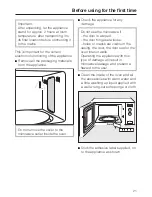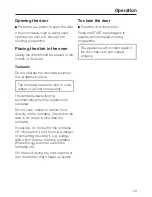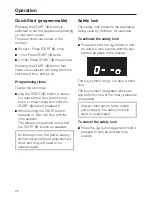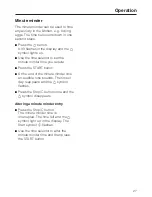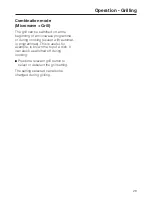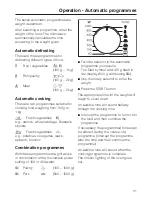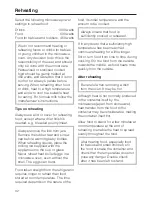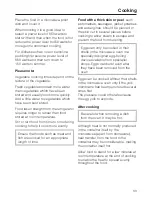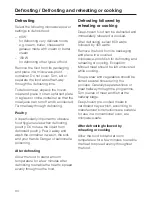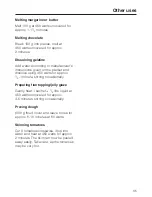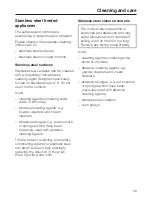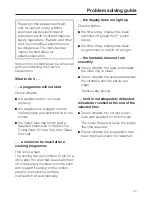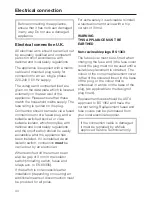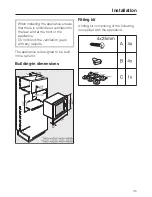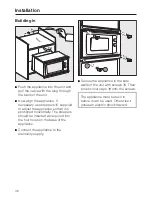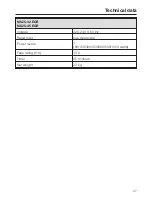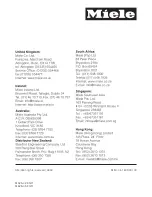
Place the food in a microwave-proof
dish and cover it.
When cooking it is a good idea to
select a power level of 850 watts to
start with and then when the food is hot
reduce the power level to 450 watts for
more gentle continued cooking.
For dishes such as rice or semolina
pudding first select a power level of
850 watts and then turn down to
150 watts to simmer.
Please note:
Vegetable cooking times depend on the
texture of the vegetable.
Fresh vegetables contain more water
than vegetables which have been
stored and usually cook more quickly.
Add a little water to vegetables which
have been kept stored.
Food taken straight from the refrigerator
requires longer to reheat than food
stored at room temperature.
Stir or turn food from time to time during
cooking to help it cook more evenly.
Ensure that foods such as meat and
fish are cooked for an appropriate
length of time.
Food with a thick skin or peel
, such
as tomatoes, sausages, jacket potatoes
and aubergines, should be pierced or
the skin cut in several places before
cooking to allow steam to escape and
prevent the food from bursting.
Eggs can only be cooked in their
shells in the microwave oven in a
specially designed egg-boiling
device available from specialist
shops. Eggs can burst even after
they have been removed from the
oven.
Eggs can be cooked without their shells
in the microwave oven only if the yolk
membrane has been punctured several
times first.
The pressure could otherwise cause
the egg yolk to explode.
After cooking
Be careful when removing a dish
from the oven. It may be hot.
Although heat is not normally produced
in the container itself by the
microwaves (apart from stoneware),
heat transfer from the food to the
container may be considerable, making
the container itself hot.
Allow food to stand for a few minutes at
room temperature at the end of cooking
to enable the heat to spread evenly
throughout the food.
Cooking
33



